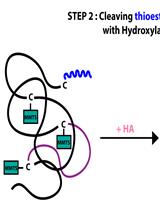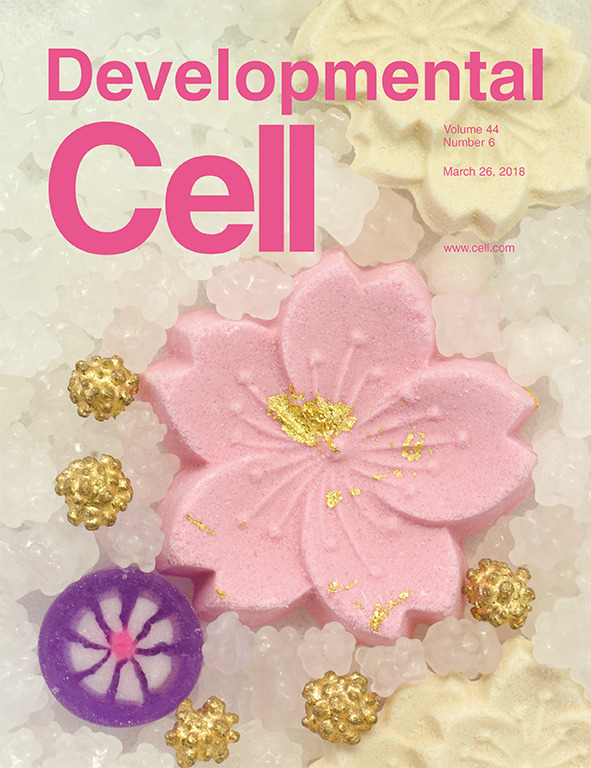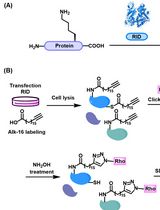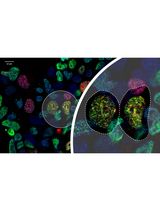- EN - English
- CN - 中文
ELISA Based Protein Ubiquitylation Measurement
基于ELISA的蛋白质泛素化检测
发布: 2019年11月20日第9卷第22期 DOI: 10.21769/BioProtoc.3430 浏览次数: 6394
评审: Angana MukherjeePooja VermaAnonymous reviewer(s)

相关实验方案

一种改良的酰基-RAC方法分离视网膜棕榈酰蛋白质组,并通过LC-MS/MS进行后续检测
Sree I. Motipally [...] Saravanan Kolandaivelu
2023年04月20日 2563 阅读
Abstract
Ubiquitylation is a common post-translational modification of cellular proteins that results in proteasomal and lysosomal degradations. Ubiquitylation is generally measured by methods such as immunoblotting using anti-ubiquitin antibodies after isolating the protein-of-interest by denaturing immunoprecipitation. The following protocol can be used to easily quantify the ubiquitylation of the protein-of-interest tagged with biotin by ELISA.
Keywords: Ubiquitin (泛素)Background
Protein ubiquitylation facilitates proteasomal and lysosomal degradations of misfolded proteins such as ∆F508 CFTR (Cystic Fibrosis Transmembrane conductance Regulator), resulting in the genetic disease, Cystic Fibrosis. In addition, protein ubiquitylation regulates selective autophagy, receptor endocytosis, and intracellular signal transductions. K48-linked poly-ubiquitylation and K63-linked poly-ubiquitylation facilitates proteasomal and lysosomal degradations, respectively. Therefore, quantitative analysis of protein ubiquitylation and specific poly-ubiquitin chain configurations of the protein-of-interest present as significant information in understanding the ubiquitylation-mediated processes.
Immunoblot detection of immunoprecipitated proteins is a commonly used technique to analyze protein ubiquitylation. This technique has an advantage in measuring the ubiquitylation of endogenous proteins; however, it is immensely demanding and time-consuming with relatively low sensitivity. In contrast, the ELISA-based ubiquitylation assay is simple and can easily quantitate the ubiquitylation levels of the protein-of-interest tagged with biotin when compared to immunoblot detection (Okiyoneda et al., 2018). The protein biotinylation can be achieved by introducing an HB (histidine-biotin) tag (Tagwerker et al., 2006) or AviTagTM on the protein-of-interest. The biotinylated protein can be easily immobilized on streptavidin or NeutrAvidin-coated 96 well plates and denatured by urea to dissociate the interacting proteins. We prefer NeutrAvidin-coated 96 well plates in this protocol due to NeutrAvidin which has a higher affinity and specificity against the biotin-tag compared to streptavidin. The ubiquitin (Ub) chains conjugated to the protein-of-interest can be quantitated by ELISA using anti-Ub antibodies, including poly-ubiquitin chain specific antibodies. Few ubiquitin ELISA kits are commercially available (e.g., UbiQuantTM quantitative ubiquitin ELISA from LifeSensors) and few ubiquitin-related ELISA methods are published as well (Conte et al., 2017). These published ELISAs use antibodies to immobilize ubiquitin or substrate proteins on multi-well plates. For some substrate proteins, the suitable antibody for the immobilization may be unavailable. In contrast, our method uses the interaction between Neutravidin and biotin in order to immobilize the biotinylated substrate proteins on multi-well plates. The interaction between Neutravidin and biotin exhibits the highest known affinity with high specificity. Moreover, it can withstand the presence of denaturing agents (e.g., 2 M urea), which dissociates the substrate-binding proteins, which may also be ubiquitinated. Thus, our method is advantageous over the other methods due to the unnecessary use of antibodies for the immobilization and specific detection of the substrate ubiquitination. The ELISA-based ubiquitylation assay potentially detects ubiquitylation of endogenous proteins genetically introduced with an HB tag or AviTagTM by the CRISPR-Cas9 system. Through this protocol, we use the BHK cells stably expressing HBH (histidine-biotin-histidine) -∆F508 CFTR-3HA which were generated as previous work (Okiyoneda et al., 2018) while the ubiquitylation of ∆F508 CFTR tagged with an HBH tag can be measured by ELISA.
Materials and Reagents
- 60 mm dish (Thermo Fisher Scientific, Thermo Scientific Nunc, catalog number: 150288)
- 1.5 ml Hyper Microtube “High-Seal” (WATSON Bio Lab, catalog number: 131-815C)
- Pierce NeutrAvidin coated 96-well white plate (Thermo Fisher Scientific, catalog number: 15116)
- BHK-21 cells (ATCC® CCL-10TM)
- BHK cells expressing HBH (His-Biotin-His) and 3HA tagged ∆F508 CFTR (Okiyoneda et al., 2018)
- Antibodies
1st antibodies- Anti-Lys48 specific ubiquitin antibody (Apu2) (Merck KGaA, catalog number: 05-1307)
- Anti-Lys63 specific ubiquitin antibody (Apu3) (Merck KGaA, catalog number: 05-1308)
- Anti-HA tag antibody (16B12) (BioLegend, catalog number: 901515)
- HRP-conjugated anti-mouse IgG (Jackson ImmunoResearch, catalog number: 115-035-166)
- HRP-conjugated anti-rabbit IgG (Jackson ImmunoResearch, catalog number: 711-035-152)
- Pepstatin A (Peptid institute, catalog number: 4397)
- Leupeptin Hemisulfate monohydrate (FUJIFILM Wako Pure Chemical Corporation, catalog number: 122-03751)
- PMSF (FUJIFILM Wako Pure Chemical Corporation, catalog number: 164-12181)
- MG132 (Cayman Chemical, catalog number: 10012628)
- N-Ethylmaleimide (Wako, catalog number: 054-02063)
- NP-40 substitute (FUJIFILM Wako Pure Chemical Corporation, catalog number: 145-09701)
- Urea (FUJIFILM Wako Pure Chemical Corporation, catalog number: 217-00615)
- BSA (FUJIFILM Wako Pure Chemical Corporation, catalog number: 015-27053)
- SuperSignalTM West Pico Chemiluminescent Substrate (Thermo Fisher, catalog number: 34080)
- Tris-HCl (FUJIFILM Wako Pure Chemical Corporation, catalog number: 204-07885)
- NaCl (FUJIFILM Wako Pure Chemical Corporation, catalog number: 195-01663)
- KCl (FUJIFILM Wako Pure Chemical Corporation, catalog number: 163-03545)
- Na2HPO4 (FUJIFILM Wako Pure Chemical Corporation, catalog number: 197-02865)
- KH2PO4 (FUJIFILM Wako Pure Chemical Corporation, catalog number: 169-04245)
- SDS (FUJIFILM Wako Pure Chemical Corporation, catalog number: 191-07145)
- Triton X-100 substitute (FUJIFILM Wako Pure Chemical Corporation, catalog number: 168-11805)
- Sodium Deoxycholate (FUJIFILM Wako Pure Chemical Corporation, catalog number: 194-08311)
- PBS (see Recipes)
- RIPA buffer (see Recipes)
- Lysis buffer (see Recipes)
- Wash buffer (see Recipes)
- Blocking buffer (see Recipes)
- Denaturing buffer (see Recipes)
- Urea wash buffer (see Recipes)
Equipment
- Varioskan® Flash (Thermo Fisher Scientific, Thermo Scientific, catalog number: 5250040)
- WellwashTM Versa Microplate Washer (Thermo Fisher Scientific, Thermo Scientific, catalog number: 5165010)
- 8 channel electronic pipette (Sartorius, catalog number: 730390) and 50-1,200 μl tips (Sartorius, catalog number: 791204)
- FormaTM 310 Direct Heat CO2 incubators (Thermo Fisher Scientific, Thermo Scientific, catalog number: 310, set at 37 °C with 5% CO2)
Software
- SkanItTM (Thermo Fisher scientific)
Procedure
文章信息
版权信息
© 2019 The Authors; exclusive licensee Bio-protocol LLC.
如何引用
Kamada, Y., Fukuda, R. and Okiyoneda, T. (2019). ELISA Based Protein Ubiquitylation Measurement. Bio-protocol 9(22): e3430. DOI: 10.21769/BioProtoc.3430.
分类
分子生物学 > 蛋白质 > 泛素化
生物化学 > 蛋白质 > 翻译后修饰
您对这篇实验方法有问题吗?
在此处发布您的问题,我们将邀请本文作者来回答。同时,我们会将您的问题发布到Bio-protocol Exchange,以便寻求社区成员的帮助。
Share
Bluesky
X
Copy link












